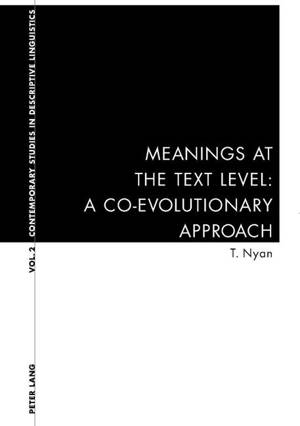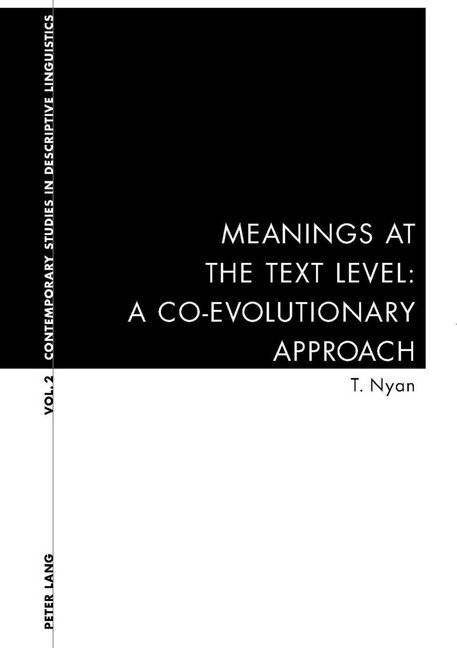
- Afhalen na 1 uur in een winkel met voorraad
- Gratis thuislevering in België vanaf € 30
- Ruim aanbod met 7 miljoen producten
- Afhalen na 1 uur in een winkel met voorraad
- Gratis thuislevering in België vanaf € 30
- Ruim aanbod met 7 miljoen producten
Zoeken
€ 121,95
+ 243 punten
Omschrijving
If language and the brain are co-evolved and language as a latecomer can avail itself of pre-existing means to solve its own problems, then it should be possible to describe it in terms of processing strategies and constraints arising from brain systems. This is precisely what this study attempts to do with respect to the emergence of three types of higher-level meanings: direct speech acts, built-in conditions for their success and non-defective performance and constraints on sequencing of an argumentational kind. In so doing there are three main issues it needs to address. What types of problem arise at the text level that could have led to the emergence in question? Is there a clear parallel between these problems and those faced by brain systems? What solutions have been evolved to cater for the latter, which could have been co-opted by language? Finally there is the question of the extent to which such an account is compatible with a global theory of brain function such as Edelman's Theory of Neuronal Group Selection.
Specificaties
Betrokkenen
- Auteur(s):
- Uitgeverij:
Inhoud
- Aantal bladzijden:
- 196
- Taal:
- Engels
- Reeks:
- Reeksnummer:
- nr. 2
Eigenschappen
- Productcode (EAN):
- 9783039102501
- Verschijningsdatum:
- 7/10/2004
- Uitvoering:
- Paperback
- Formaat:
- Trade paperback (VS)
- Afmetingen:
- 152 mm x 229 mm
- Gewicht:
- 267 g

Alleen bij Standaard Boekhandel
+ 243 punten op je klantenkaart van Standaard Boekhandel
Beoordelingen
We publiceren alleen reviews die voldoen aan de voorwaarden voor reviews. Bekijk onze voorwaarden voor reviews.








